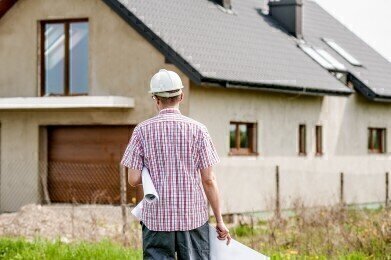Air Clean Up
How Housing Developers Can Reduce Pollution
Nov 12 2019
With the UK expected to need to build at least 300,000 new homes every year just to keep up with the demand of an ever-increasing population, it’s clear that the British construction industry looks set to be busy for the foreseeable future. However, a recent study revealed that the global building and construction sector is responsible for well over a third (38%) of all energy-related emissions.
As a result, housing developers have a golden opportunity to make a real difference to the environmental issues facing the UK. Implementing sustainable principles and utilising green infrastructure can make a significant impact on air quality in urban locations. However, best practices are not yet well-defined and the sector requires clear guidelines from the authorities in order to achieve optimum results, according to a paper from the University of Surrey.
Treading carefully
The study was conducted by researchers from the Global Centre for Clean Air Research (GCARE) at the university, and looked primarily into how green infrastructure can mitigate the deleterious effects on the environment produced by construction. It concluded that planting trees, hedges and green roofs can have startling beneficial impacts, but that due care and attention must be taken when it comes to the planning stage.
That’s because while strategic deployment of such greenery does have the potential to remove or reduce airborne pollution, improper use of trees can actually make urban pollution worse. Those unwanted consequences are caused largely by restricting airflow and creating a barrier that prevents the dispersal of contaminants. For that reason, it’s imperative that housing developers consider the problem from all angles before making a decision on where and when to implement green infrastructure in their building projects.
Better guidelines needed
For them to achieve the best results with regard to the environmental performance of their developments, it’s essential that construction companies are provided with a clear and easy-to-follow blueprint for reducing their carbon footprint, both during the process of construction and going forwards. While the industrial and energy sectors both benefit from such guidance – including the medium combustion plant directive (MCPD), for example – the construction industry as yet does not have access to any comparable information.
Therefore, the authors of the study are calling on researchers all over the world to investigate how urban vegetation can alleviate the effects of air pollution. Specifically, they want to see more studies investigating air quality, green infrastructure and human health all at once, rather than in isolation (as is currently the norm). Only in this way will housing developers and engineers gain access to knowledge about which plants to use, where to place them and in what concentrations, in order to create a living environment that is as eco-friendly and healthy for its residents as possible.
Events
May 05 2024 Seville, Spain
May 13 2024 Munich, Germany
May 23 2024 Beijing, China
May 23 2024 Beijing, China
Jun 10 2024 Algiers, Algeria














